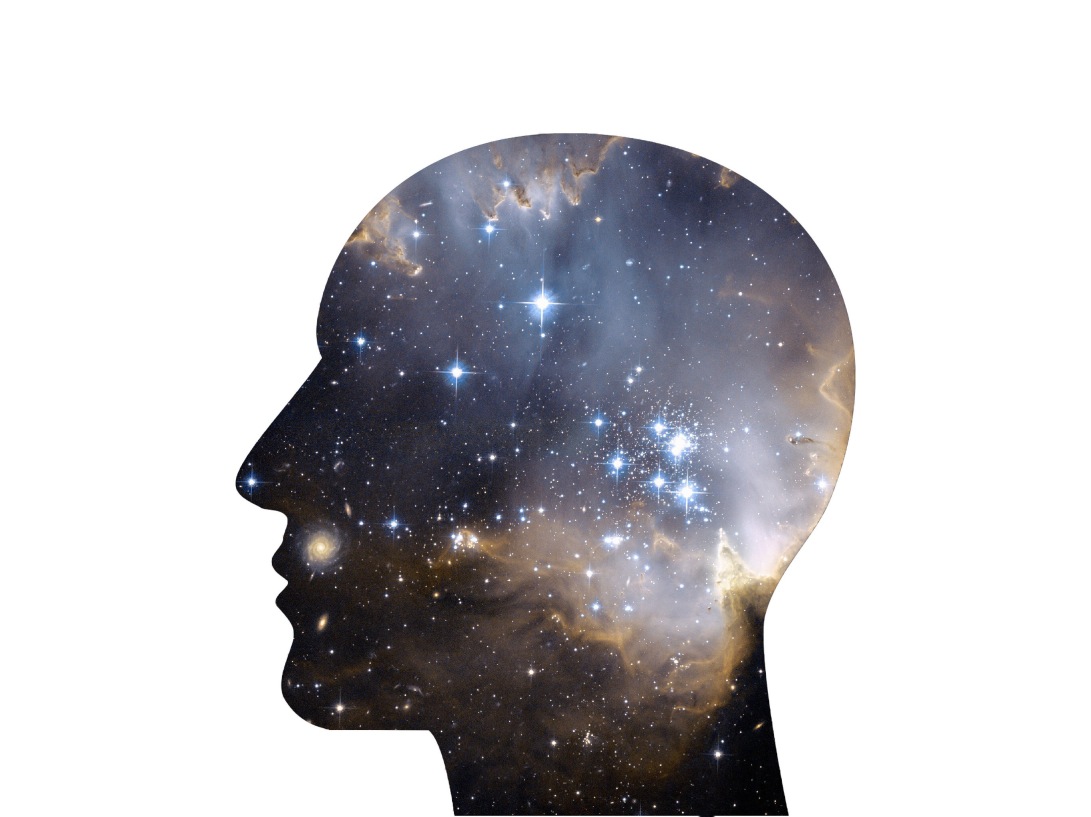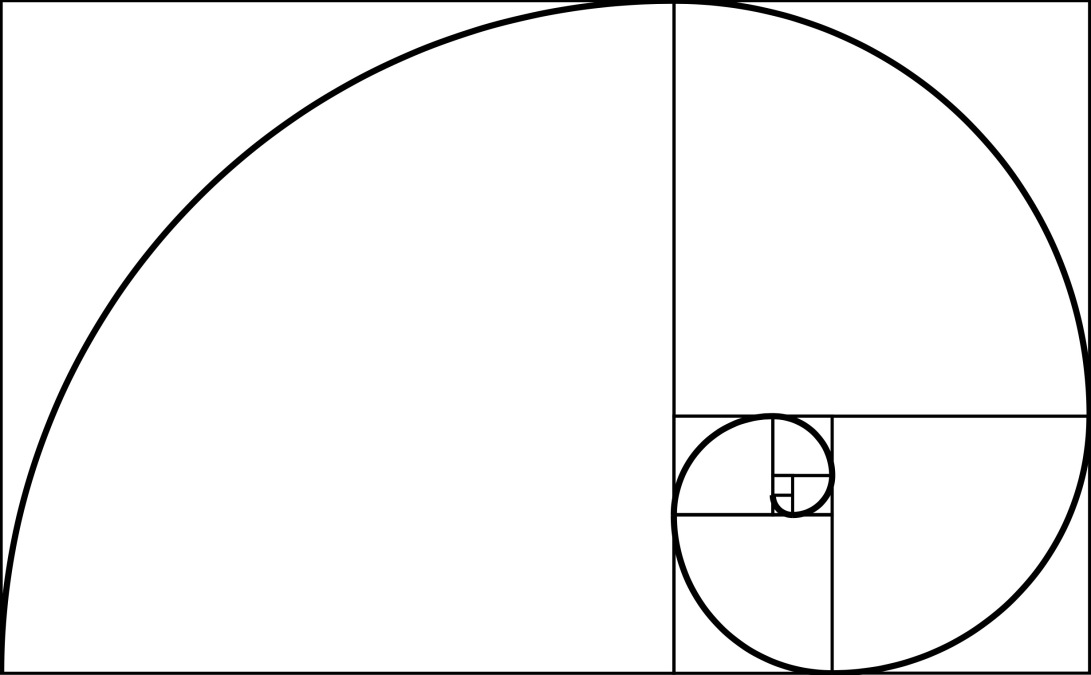INTRODUCTION
Observations: Reimagining the Mind (7)
Cognition: Once Upon a Theory (5)
Perspective: Eye of the Beholder (6)
Emergence: Simplifying Complexity (4)
Reimagining the Mind

The story of what it means to be human is fundamentally a story about the search for meaning. But what if our ability to find a sense of meaning arises from our ability to sense the world around us? Just as matter emerges from distinct levels of physical interactions — with atoms giving rise to molecules giving rise to cells — perhaps the mind emerges from distinct levels of cognitive interactions. Informed by Uri Wilensky and Mitchel Resnick’s work on emergent levels; Andrew Ortony, Donald Norman, and William Revelle’s work related to levels of cognitive processing; and Terrence Deacon’s work involving the levels of representation, this perspective of cognition reimagines the mind as a universe of emergent complexity.
LOOKING OUTWARD

Human beings have a wonderful imagination. Gazing up at the night sky, we can envision ourselves on a planet that’s spinning through a solar system, among billions of other solar systems spinning through a galaxy, among billions of other galaxies spinning through space. We are able to contemplate the complexity of the universe, and we’re aware that there is more out there than humanity may ever discover or even be able to comprehend.
LOOKING INWARD

That complexity also exists within us. As living organisms, we have bodies, and those bodies have cells, and those cells have molecules, and those molecules have atoms, and those atoms have sub-atomic particles. All of which is to say that being alive is no simple matter.
LOOKING FOR MORE

In the midst of all this complexity, we know that we are more than the sum of our physical parts. But what is that something more? Why are we aware of it? How has it enabled us to move, sense, feel, and think in the world? Can it really be a product of the chemical signals, neural activity, and computational processes of the brain?
Q&A

These questions address some of the biggest mysteries in the universe. Even with all the amazing advancements in science and technology, it’s possible we will never get all the answers. However, we do know that whatever answers we find will depend on what questions we choose ask, where we decide to look, which doors we select to open.
MIND & MATTER

“Mind” is an ambiguous reference to the processes of cognition, awareness, and consciousness. A lot of modern research about the mind focuses on cognition as a function of the brain. The underlying question, though, is how mental awareness emerges from the physical awareness. We already know that our physical bodies are manifestations of complex patterns and levels of interaction among forms of matter. What if cognition involves similar patterns and levels of interaction among forms of mind?
REFRAMING THE QUESTION

From living organisms to cells to atoms, more complex forms of matter emerge from less complex forms of matter. What if we reframe the question of cognition by asking how we might understand it in terms of more complex forms of mind emerging from less complex forms of mind? To explore this question, we need a generalizable description of the emergence of complex systems that we can then use as a template for describing an emergent systems perspective of cognition. But before we start exploring, we need to orient ourselves relative to current perspectives of cognition.
Once Upon a Theory

The stories we tell and how we tell them say a lot about us. In many ways, it is the same with theories. What might our theories of cognition tell us about how we’ve been thinking about thinking?
THOUGHTS ABOUT COGNITION

These days, cognition is generally used to refer to the activities of the brain and central nervous system which enable us to think, feel, sense, and act in the world. This definition can be modified to include ecological perspectives in which our bodies, relationships, and environments are also considered to be part of cognition. Even as we explore different perspectives, however, the brain remains at the center of most theories about the basic mechanics of the human mind.
DIFFERENT POINTS OF VIEW
WHAT YOU SEE IS WHAT YOU GET…

These differences in perspective also explain some of the problems with trying to describe how various theories relate to each other. It is perhaps more useful to characterize theories by the sorts of questions they are looking into rather than the answers they are finding. For example, many theories of cognition emphasize one of the following questions:
LOOKING FOR A BIGGER PICTURE

All of these perspectives involve big, important questions. But could an integrated perspective help us go beyond these individual points of view to see a bigger picture? It is a different, but no less important inquiry into the study of cognition as well as our understanding of it.
Eye of the Beholder

If perspectives are so important, how can we use them more intentionally? How do we design ways to see things differently?
THE GHOST OF REVOLUTIONS PAST



Many of our most basic ideas about how the world works have been transformed by technological revolutions. The scientific method gave rise to the study of cause and effect; manufacturing gave rise to the study of interacting parts; computers gave rise to the study of network systems. Each of these major advances in tools and techniques embodied a signature perspective that eventually proliferated throughout society and pollinated our collective ways of thinking.
THROUGH THE LENS OF TECHNOLGY

Whether the topic is cognition or something else, the kinds of answers we find are a function of the types of question we ask; the types of questions we ask reflect the ways we think; the ways we think are informed by the cultures of the social groups in which we live; and the social groups we live in are influenced by the tools and technologies embedded into their everyday lives.
A QUICK LOOK

Here’s a trick question: What do you see when you look at a leaf? When you look at it with just your eyes, you might see it as part of a tree or a forest or a floral arrangement. Or maybe, it’s just a leaf.
A CLOSER LOOK

What if we used a microscope to look at the leaf under different levels of magnification? Then we’d be able to look at the leaf and see a whole, then zoom in a level and discover that it is simultaneously composed of interacting parts called cells. If we were able to look at one of those cells and zoom in another level, we would discover that it is also simultaneously composed of its own interacting parts called molecules. And so on and so on. The more we zoom in, the more there is to see.
SEEING & BELIEVING

Perspective isn’t just about what we look at, it’s also about what we see. Even if seeing isn’t always believing, technology enables us to see things differently and subsequently to conceive of things beyond what we can perceive with our own eyes. As a sort of conceptual technology, theoretical frameworks can help us see in new ways too.
Simplifying Complexity

It’s been said that “Everything is simpler than you can imagine and more complex than you can comprehend.” As one might guess, emergent complexity is rather complex. Nevertheless, with a little imagination, there are simple ways to organize how we think about it.
FINDING ORDER IN CHAOS

Emergent complexity, or emergence, is a term typically used to describe the way in which relatively simple interactions can have disproportionately complex results. It involves a kind of grassroots, bottom-up organization that helps explain why we find so much order in a universe that lacks any executive, top-down organization. Everything from superconductivity to ant colonies and other everyday phenomenona are considered to be examples of emergence.
EMERGING THEMES
HIGHER LEVEL THINKING

Of course, not all levels are created equally. Emergent levels are informed by specific dynamic, part-whole, and cause and effect relationships. If we organize these relationships into dimensions of patterns and levels of interaction, they provide the basis for an emergent systems framework.